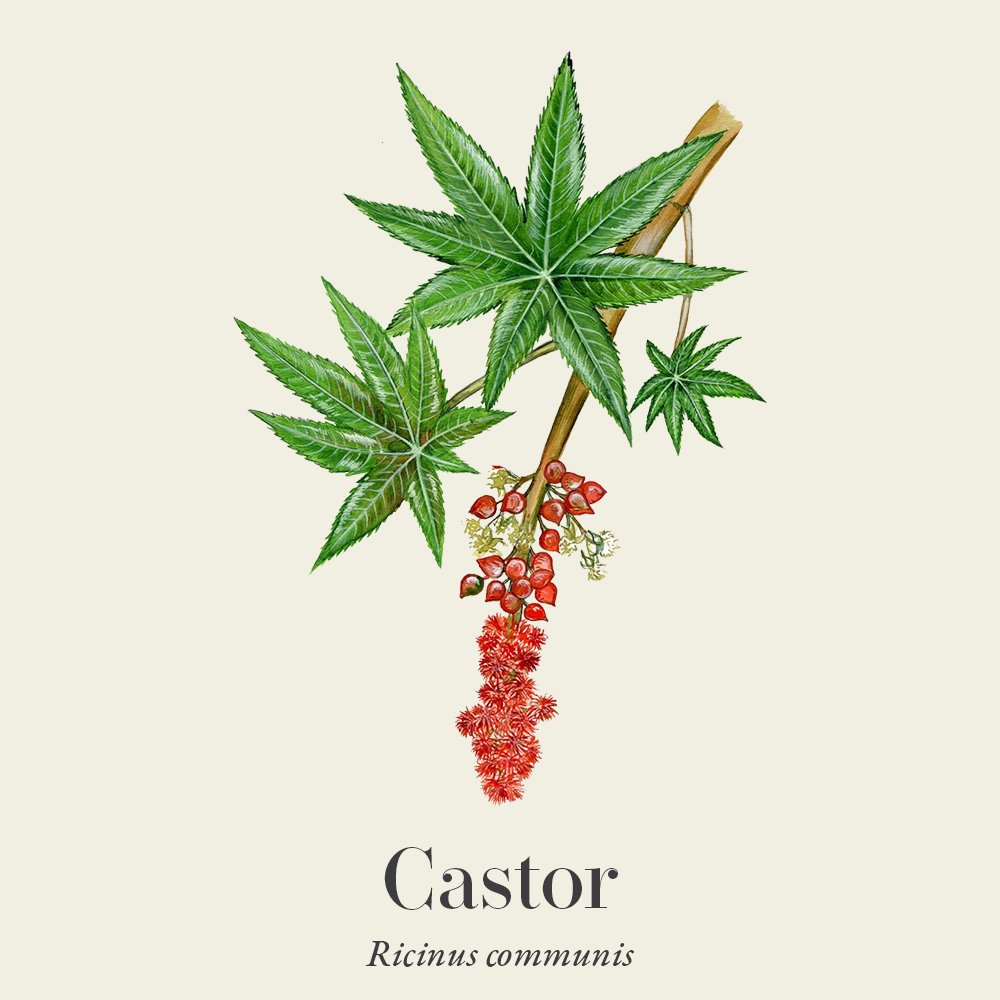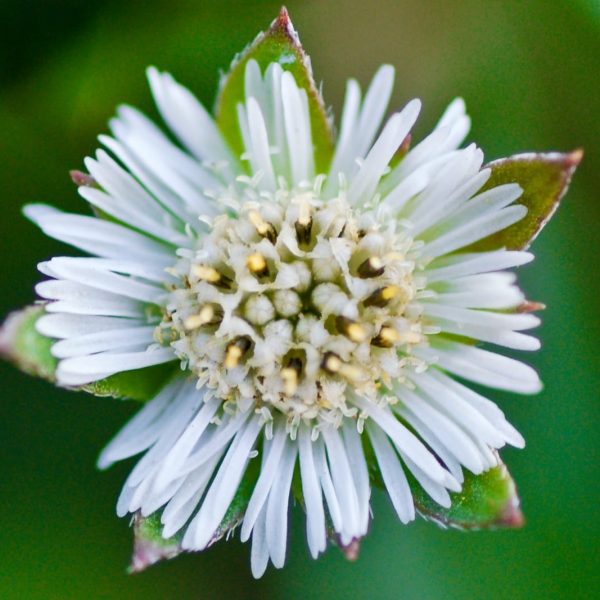-
How does it feel?
The castor plant is a native of Africa and grows all over India as a small perennial shrub. There are red and white varieties and it is the white variety that is valued medicinally. The seeds can be found within characteristically spikey, green, pod like fruits that contain around 3 seeds per pod. The whole seed is considered toxic when eaten whole due to the toxicity of the protein ricin. However, the ricin is denatured after pressing the seeds to extract the oil, rendering castor oils harmless.
-
What can I use it for?
Castor oil works as an osmotic laxative and will penetrate the intestines and hold water within them, influencing a total cleansing effect. Castor oil is very effective at penetrating all tissues to a deep level and removing stubborn fluid accumulations that may have taken the form of cysts, lumps or just generalised inflammation.
-
Into the heart of castor
 Castor oil is warm, lubricating and emolliating. It is ideal for any form of congestion and irritating dryness. Consequently, castor oil can be incredibly beneficial for all forms of internal congestion manifesting in the joints, digestion, skin and reproductive systems. It will aid in the removal of any toxic congestion, whilst also moistening and soothing any dry or inflamed tissues that manifested as a result of such built up toxicity.
Castor oil is warm, lubricating and emolliating. It is ideal for any form of congestion and irritating dryness. Consequently, castor oil can be incredibly beneficial for all forms of internal congestion manifesting in the joints, digestion, skin and reproductive systems. It will aid in the removal of any toxic congestion, whilst also moistening and soothing any dry or inflamed tissues that manifested as a result of such built up toxicity.In mild to moderate constipation castor oil acts as an osmotic laxative. Its effect is very dose dependant and can range from cathartic to aperient. As an emollient it lubricates any dryness and improves the peristaltic movement within the intestines. It can be effectively used in the form of an external castor oil pack.
Castor oil applied externally in the form of a pack on areas of arthritic inflammation can help draw out any excess fluid accumulations that may be influencing pain, swelling and even deformation of the joints. Traditionally, the oil has also been used to help reduce areas of paralysis aggravated by congestion.
Castor oil packs applied over lumps, tumours and/or cysts, will aid in clearing any excessive accumulations that may be aggravating the affected area or organ.
The oil in its neat form can be used to treat styes, conjunctivitis and foreign objects in the eyes through clearing any toxic accumulations.
The oil is considered beneficial as an external application for warts and fungal infections of the skin and nails as it will help to draw out any underlying toxins. Pure, unheated castor oil will also lubricate and emolliate any dry and irritated skin conditions, providing a degree of relief for conditions such as eczema and psoriasis.
-
Traditional actions
Herbal actions describe therapeutic changes that occur in the body in response to taking a herb. These actions are used to express how a herb physiologically influences cells, tissues, organs or systems. Clinical observations are traditionally what have defined these actions: an increase in urine output, diuretic; improved wound healing, vulnerary; or a reduction in fever, antipyretic. These descriptors too have become a means to group herbs by their effects on the body — herbs with a nervine action have become the nervines, herbs with a bitter action are the bitters. Recognising herbs as members of these groups provides a preliminary familiarity with their mechanisms from which to then develop an understanding of their affinities and nuance and discern their clinical significance.
Western actions
-
Traditional energetic actions
Herbal energetics are the descriptions Herbalists have given to plants, mushrooms, lichens, foods, and some minerals based on the direct experience of how they taste, feel, and work in the body. All traditional health systems use these principles to explain how the environment we live in and absorb, impacts our health. Find out more about traditional energetic actions in our article “An introduction to herbal energetics“.
Western energetics
-
Did you know?
In Ayurvedic traditions, castor oil was applied externally to the scalp, eyebrows and eyelashes in order to promote hair growth.
Additional information
-
Safety
No drug-herb interactions are currently known.
-
Dosage
Castor oil is traditionally used in massage and/or applied as an external pack. Castor oil packs can be made by soaking a flannel in warmed castor oil, applying to the affected area and then covering yourself with a towel and hot water bottle for up to 20 minutes.






























 Castor oil is warm, lubricating and emolliating. It is ideal for any form of congestion and irritating dryness. Consequently, castor oil can be incredibly beneficial for all forms of internal congestion manifesting in the joints, digestion, skin and reproductive systems. It will aid in the removal of any toxic congestion, whilst also moistening and soothing any dry or inflamed tissues that manifested as a result of such built up toxicity.
Castor oil is warm, lubricating and emolliating. It is ideal for any form of congestion and irritating dryness. Consequently, castor oil can be incredibly beneficial for all forms of internal congestion manifesting in the joints, digestion, skin and reproductive systems. It will aid in the removal of any toxic congestion, whilst also moistening and soothing any dry or inflamed tissues that manifested as a result of such built up toxicity.





